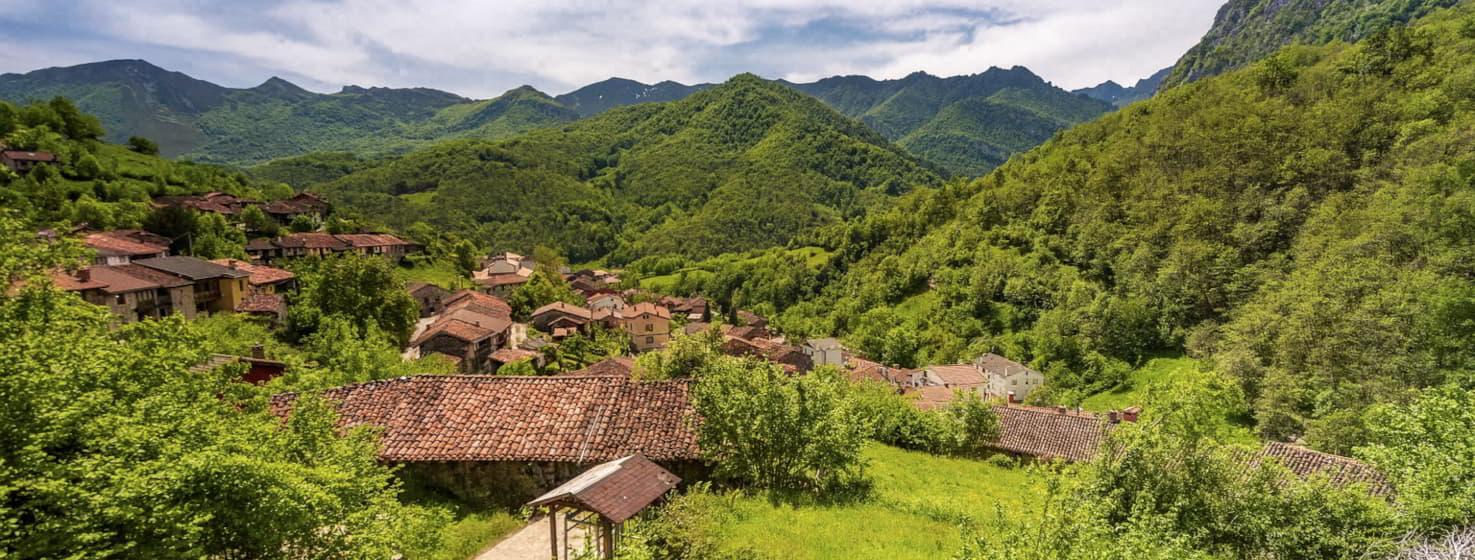
En esta comarca la tierra es fértil por dentro y por fuera, como si la naturaleza hubiese querido premiarla con una doble generosidad. Primero por dentro, con esa riqueza minera que sostuvo toda una economía regional, y ahora por fuera, con paisajes verdes y naturales que renacen con fuerza gracias a una reconversión limpia, de tintes tecnológicos y medioambientales. El tirón creciente del Parque Natural de Redes, en la cabecera del valle, ayuda a transformar este territorio en un destino natural de primer orden.
Historia y patrimonio del Valle del Nalón
El relieve del Valle del Nalón está surcado por una densa red de ríos breves pero bravos, torrentes impetuosos (afluentes todos del río Nalón) que han horadado la montaña y abierto valles transversales como el de Candín, Barrero, Samuño, Villar, La Güeria de Blimea, Tiraña o Villoria. Este tipo de paisaje favoreció la minería en las laderas desde finales del siglo XVIII, cuando las bocaminas se abrían directamente en los flancos del terreno. Después, la actividad fue bajando poco a poco, del monte al valle. Surgieron entonces los pozos verticales y con ellos una infraestructura cada vez más compleja: castilletes, chimeneas, lavaderos, tolvas, etc. Todo un paisaje industrial sostenido por una densa red ferroviaria que transportaba el carbón hacia los puertos y las fábricas. Un paisaje no de postal, sino de epopeya, donde el trabajo dejó una huella más honda que la del río.
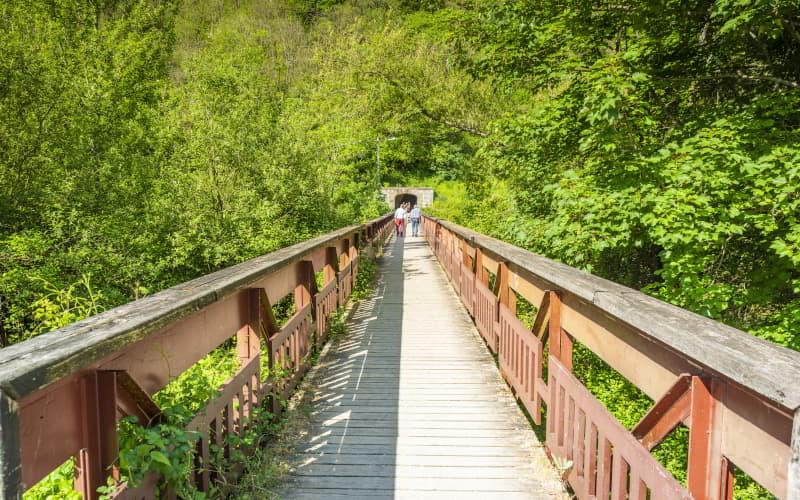
A comienzos del siglo XX, el Valle del Nalón - junto al del Caudal - ya era uno de los grandes motores industriales de España. Solo en Langreo había más de treinta minas activas. Empresas como Duro Felguera o Hunosa comenzaron a ser las auténticas columnas vertebrales del desarrollo económico y social de la comarca. Al calor del carbón crecieron Sama, La Felguera, El Entrego o Pola de Laviana, alimentando municipios de gran densidad poblacional como Langreo, San Martín del Rey Aurelio o Laviana.
Patrimonio industrial
Con cerca de 70.000 almas, la comarca sigue siendo una de las más densamente habitadas de Asturias. La memoria del carbón también persiste, encarnada en el habla, el orgullo colectivo y la conciencia obrera dominante. Algunas de las viejas estructuras mineras se han transformado en museos y centros de interpretación del patrimonio industrial del valle, dando testimonio de un tiempo, no tan lejano, que se niega a desaparecer.
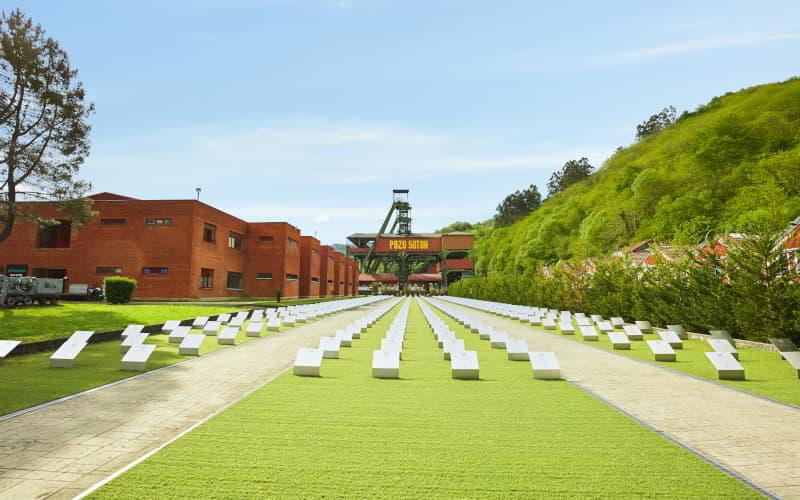
En El Entrego/ L’Entregu (San Martín del Rey Aurelio), en una de las catedrales de la antigua actividad minera, el Pozo Sotón, el visitante puede descender a las entrañas de la mina y sentir en sus carnes lo que significaba trabajar a seiscientos metros bajo tierra. Muy cerca se encuentra el Museo de la Minería y la Industria de Asturias (MUMI), uno de los más visitados de Asturias, y cruzar sus puertas es entrar en la historia con las botas puestas. El trabajo en la mina deja de ser una idea abstracta y se convierte en algo físico: un martillo neumático, una jaula, una lámpara de carburo. También nos ilustra sobre las pugnas por el dominio de las explotaciones, los primeros logros técnicos, o esos instantes de camaradería que, bajo tierra, atenuaban la crudeza del trabajo.
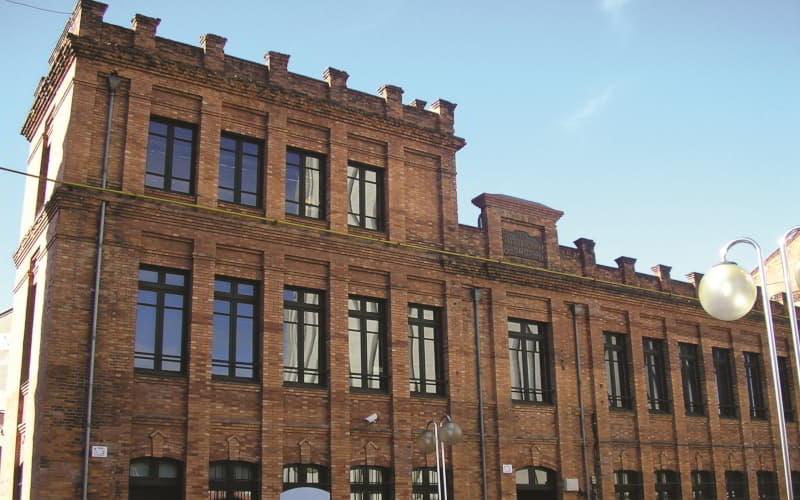
Que Langreo fuese declarado "Kilómetro Europeo de la Cultura", en la década de los sesenta del siglo XX, significó un importante reconocimiento a su intensa vida intelectual, artística y social, en un momento en el que no sólo producía carbón y acero, sino también ideas y pensamiento crítico de calado. Hoy, en este municipio destacan propuestas como el Ecomuseo Minero del Valle de Samuño, en Ciañu. El visitante puede subirse a un tren subterráneo y adentrarse en una galería auténtica con olor a carbón y esa humedad persistente, los viejos equipamientos y las herramientas de trabajo. Una experiencia sensorial, didáctica y emocionante, que resulta ideal para toda la familia al combinar historia y aventura. También en Langreo, en La Felguera, el Museo de la Siderurgia de Asturias (MUSI), ubicado en la antigua torre de refrigeración de la Fábrica de Duro Felguera, ilustra el proceso del hierro al acero y la vida en torno a la fábrica. Desde el MUSI parte la Ruta de la Siderurgia, que recorre hitos como el alto horno, los chalets de los ingenieros, antiguos talleres o viviendas obreras.
Naturaleza y paisajes del Valle del Nalón
El Valle del Nalón forma parte del Paisaje Protegido de las Cuencas Mineras -declarado en 2002 por su valor ecológico e industrial -. Un paisaje que suma 4.000 hectáreas recuperadas para el disfrute de los vecinos. La Senda Fluvial del Nalón, por ejemplo, es un itinerario que conecta Laviana, San Martín del Rey Aurelio y Langreo, cruzando antiguos espacios mineros reconvertidos en zonas verdes, áreas recreativas, pasarelas y miradores. Más de 20 kilómetros de recorrido suave, ideales para caminar, correr o practicar el cicloturismo.
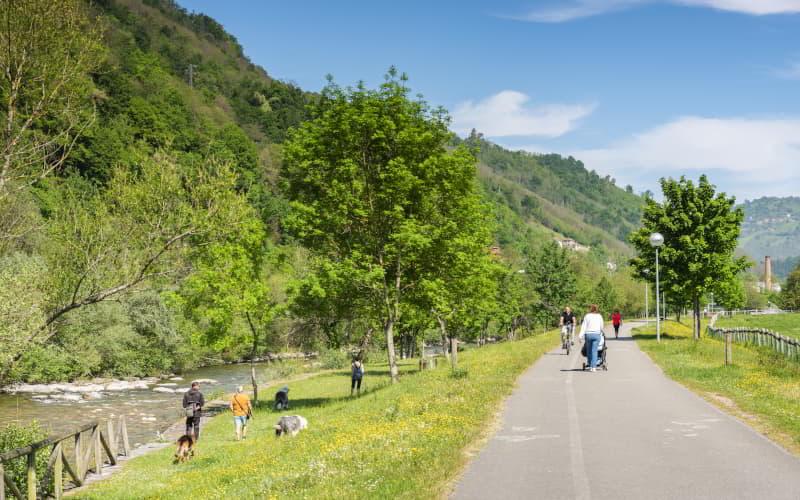
El Parque Natural de Redes
Pero el auténtico pulmón verde del Valle del Nalón es el Parque Natural de Redes, un espacio de naturaleza intacta y bellísima. Se extiende por los concejos de Caso y Sobrescobio. Fue declarado Parque Natural en 1996 y Reserva de la Biosfera en 2001, por ser uno de los enclaves más puros y representativos del ecosistema cantábrico. La naturaleza ofrece aquí una generosidad que desarma al visitante. Se presenta como una sinfónica composición de montañas calcáreas, hayedos umbrosos, vegas fértiles y brañas milenarias. Son casi 400 kilómetros cuadrados de extensión. Un mundo abrupto en el que más del 80% del terreno se alza por encima de los 800 metros. Su cumbre más alta es el Picu Torres (2.104 m), seguido por otras míticas como el Tiatordos, el Cantu l’Osu o el Retriñón.
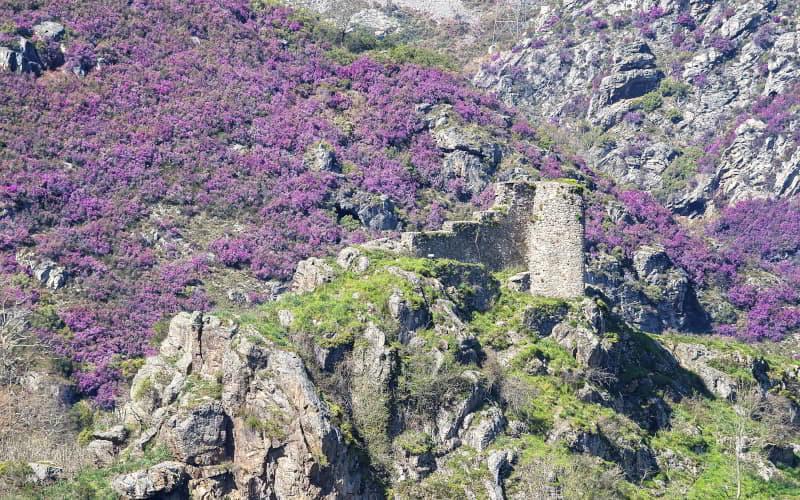
Redes es, además, códice silvestre de la Asturias más frondosa. En su seno conviven hayedos, robledales y castañares centenarios. Casi la mitad de su superficie —se dice pronto: un 40%— está cubierta de masa forestal. A ello hay que añadir una vegetación de alta montaña que trepa sin rubor hasta los riscos o los pastos de altura donde rumian las vacas libres. Y también está el oso pardo, el lobo ibérico, etc . En el aire planea el águila real, y por las sendas del monte los hombres se cruzan con jabalíes, raposos (zorros) y con la mayor población de ciervos y rebecos de toda Asturias.
Pero ante todo, Redes es agua. Mucha agua. Aquí llueve generosamente: entre 1.200 y 2.000 mm al año, como si el cielo quisiera asegurarse de que cada árbol tenga lo suyo. De esa abundancia hídrica viven los embalses de Tanes y Rioseco, que abastecen a media Asturias de agua potable.
Rutas por el Parque de Redes
Así como el agua es hilo conductor de una geografía que nace en manantiales cristalinos, serpentea en arroyos, se remansa en embalses o duerme en lagos, las sendas también podrían ser cauces diversos que se abren paso entre la montaña. Desde las más sencillas y familiares a las más exigentes y alpinas, Redes posee una “cascada” de rutas:
La Ruta del Alba (Sobrescobio): Una excusión al alza, de las más transitadas de Asturias y apta para toda la familia. Sólo hay que seguir el curso del río Alba entre bosques de ribera, pozas de agua cristalina y varios saltos de agua. Las paredes del desfiladero se irán cerrando poco a poco en la Foz de Llaímo.
A un poco más de altitud, el agua se descuelga, se vuelve vertical. Es el Tabayón del Mongayu (Caso), una cascada que cae como si el monte llorase de emoción. El sendero que conduce hasta ella requiere algo más de aliento, pero es igualmente válida para todos los públicos.
En Brañagallones (Caso) el agua se remansa, se abre como una llanura inesperada entre montañas. La subida hasta aquí exige piernas entrenadas, una excursión de dificultad media para una jornada completa de ruta. La mejor recompensa es la arcadia pastoril que alcanzaremos.
El Lago Ubales (Caso): hay que ir a buscar el agua en lo más alto, allí donde adopta la forma de lago glaciar, a 1.690 m de altitud. Debemos calzarnos unas buenas botas y enfrentar una larga caminata, de exigencia media-alta, con elevados desniveles.

El Desfiladero de los Arrudos (Caso), uno de los grandes cañones fluviales del Principado. El paisaje se convierte en garganta y nos “deslizamos” entre muros verticales. Una de las rutas más bellas y exigentes del parque.
Y si aún quedan fuerzas, llega el mayor reto: el Tiatordos (Caso), conocido por los montañeros como “la montaña perfecta”. La subida exige cuerpo, cabeza y voluntad. Es la ruta de quienes buscan no solo paisaje, sino también desafío.
Desde esta cima el Nalón parece un hilo de plata, aunque en el fondo sea un río grandón, el más largo de Asturias. Aún le quedan 150 kilómetros de aventura por delante hasta su desembocadura.
Consejos para disfrutar del Valle del Nalón
Desde Oviedo/Uviéu o Gijón/Xixón, se puede llegar fácilmente por la AS-17 (conocida como la Autovía del Nalón) en apenas 30 minutos. También podemos hacerlo en tren de cercanías.
Visitar el Valle del Nalón es abrir un calendario que cambia con las estaciones, cada una de ellas te propone una forma distinta de disfrutar el paisaje, la cultura o la gastronomía. La primavera es un despertar literal. Los ríos bajan crecidos, el monte reverdece y las aldeas se desperezan tras el invierno. Es el momento perfecto para descubrir el Parque Natural de Redes. La Ruta del Alba está en su mejor momento y el Tabayón del Mongayu se vuelve más espectacular con el deshielo. El Centro de Interpretación del Parque de Redes (Caso) o La Casa del Agua (Sobrescobio) nos regalan una mirada completa a este lugar único. El entorno de Rioseco/Rusecu, la bella capital de Sobrescobio y su embalse, es un paraíso para los amantes de la ornitología. En la aldea casina de Veneros, el Museo de la Madera nos relata la importancia que tuvo en el mundo rural esta materia prima y también las legendarias madreñas, calzado hecho íntegramente de madera para proteger el pie del barro y la humedad. Siempre es buena idea acercarse a Laviana, patria chica de Armando Palacio Valdés, y lugar idóneo para iniciarse en la gastronomía de la zona con sus Jornadas Gastronómicas del Cabritu (marzo).
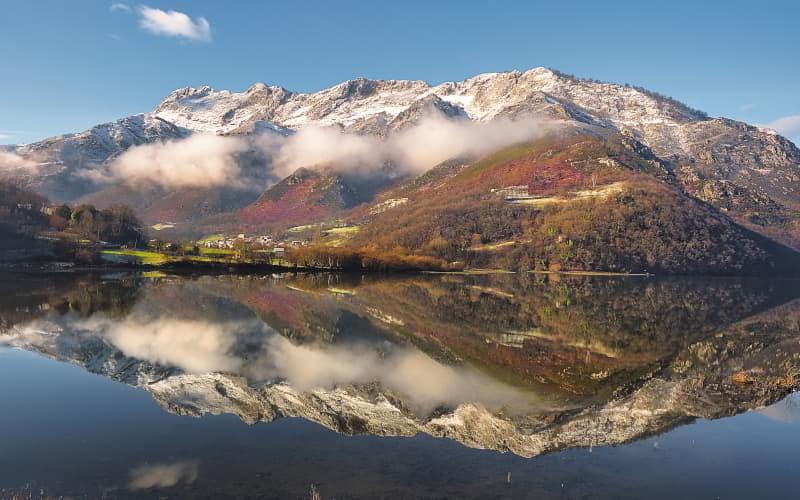
En verano el Nalón se convierte en escenario de fiestas patronales, ferias ganaderas, verbenas y gastronomía compartida al aire libre, con la sidra como protagonista. Pero si hay una cita imprescindible esta es el Descenso Folklórico del Nalón, el tercer sábado de agosto en Pola de Laviana. Esta romería acuática y carnavalesca está declarada Fiesta de Interés Turístico Nacional, y no es para menos. Embarcaciones disparatadas y llenas de humor bajan por el río empujadas a pulso por las peñas participantes.
El Certamen del Queso Casín, en El Campu (Caso) el último fin de semana de agosto, nos pone a tiro una de las divinidades del paladar astur. Un queso de sabor fuerte y personalidad inconfundible, con Denominación de Origen, que es tan antiguo que se pierde en la leyenda, hasta el punto de contarse que Don Pelayo recibió uno tan descomunal que se transportó en un carro del país.
Cada 8 de septiembre, Langreo celebra su gran fiesta en la Ermita de El Carbayu, una genuina romería tradicional asturiana que mezcla folclore, puya'l ramu y comida en el prau.
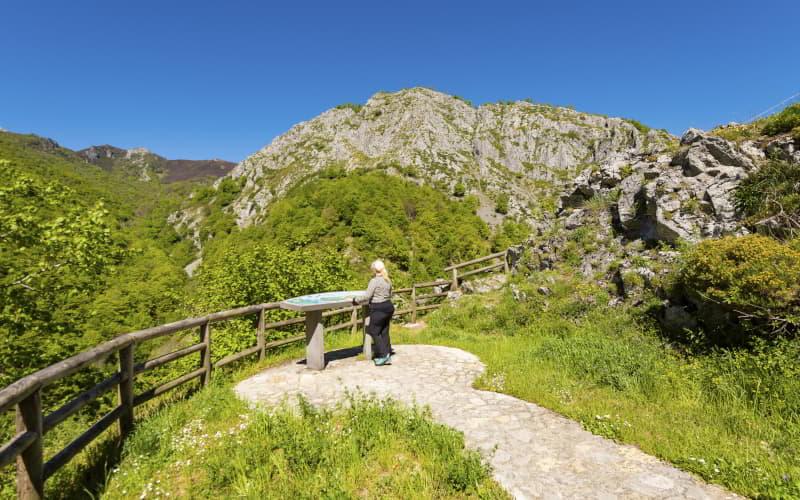
Otoño es quizá la estación más mágica del Parque de Redes. El momento de perderse en sus bosques. Los hayedos se tiñen de ocres, dorados y rojizos. Y entre las hojas crujientes y el frescor del aire, resuena el bramido ancestral de la berrea de los venados - que podemos presenciar en vivo si nos apuntamos a rutas organizadas -. Para asombrarnos más aún con el manto otoñal de Redes, podemos subir el puerto de Tarna, con vistas maravillosas del Alto Nalón y de todo el parque. En este rincón emblemático de la montaña asturiana, nos toparemos con la esencia del valle: la Fuente La Nalona - nacimiento del río Nalón -.
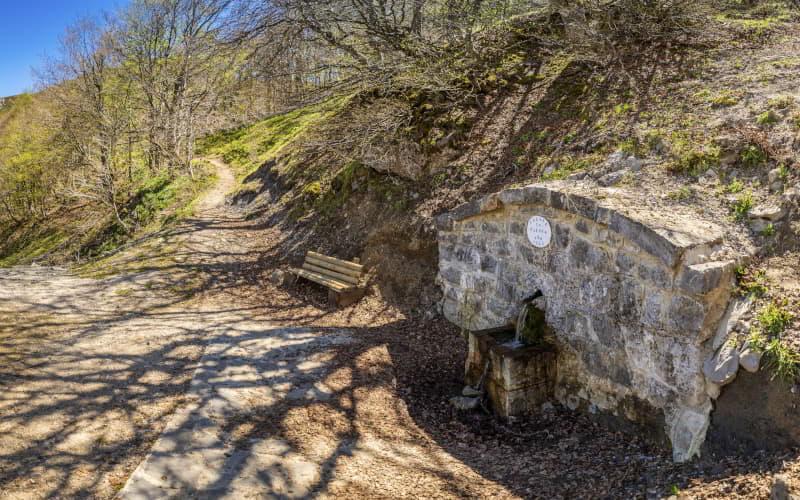
El invierno es perfecto para descubrir el patrimonio industrial del valle Nalón y sus museos. Es tiempo para profundizar en la sociología minera, recorriendo sus núcleos más poblados, apuntándose a la extensa programación de sus teatros y centros culturales, y por supuesto es momento para ir de tapas, pues la cultura del chigre está más viva aquí que en ningún otro sitio. Pero el invierno también es tiempo de meter la cuchara en un buen plato caliente. Apuntaros estos cuatro festivales gastronómicos (todos ellos declarados de Interés Turístico Regional), que os dejaran sin palabras y con el estómago lleno:
Jornadas Gastronómicas de los Nabos, en Sotrondio (primer fin de semana de noviembre.). Pote de nabos con compango, seguido de callos y casadielles.
Jornadas de les Cebolles Rellenes, en El Entrego/ L’Entregu (finales de noviembre). Cebollas rellenas de bonito con su salsa gloriosa.
Jornadas de los Pimientos Rellenos, en Blimea (primeros de diciembre). Pimientos rellenos de carne o bonito, al horno o a la cazuela, un plato exquisito.
Jornadas de la Fabada, en La Felguera (diciembre). Fabes autóctonas y compango de primera, un sueño cumplido.
En definitiva, el Valle del Nalón es un lugar para descubrir sin prisa, con unas buenas botas, los ojos bien abiertos, el paladar entrenado y, siempre, con la disposición de quedarse un poco más.
Galería de Imágenes
Mapa
Qué ver
- Parque Natural de Redes y Reserva de la Biosfera en Caso y Sobrescobio.
- Ruta del Alba.
- Museo-Casa Natal de Armando Palacio Valdés en La Pola Llaviana/Pola de Laviana (Laviana).
- Museo de la Minería y de la Industria en L' Entregu/El Entrego (San Martín del Rey Aurelio).
- Ecomuseo Minero Valle de Samuño en El Cadavíu, Ciañu (Langreo).
- Museo de la Siderurgia en La Felguera (Langreo).
- Mapa de la Comarca Valle del Nalón.
- Las 10 mejores cosas que ver y hacer en el Valle del Nalón.
- Las 10 mejores cosas que ver y hacer en el Parque Natural de Redes






